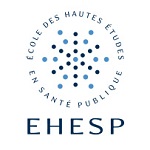Remote sensing and high-frequency monitoring [chapter 9]
Abstract
One way to face the needs for water quality measurement at large scale, all over the world, is obviously through satellite remote sensing applications. From the first satellites up to now, the progress in sensors technology has highly improved the quality of remote data. The applications for sea and natural water quality are numerous and particularly adapted for large countries such as China or Africa. The parameters measured by remote sensors (mainly turbidity, chlorophyll-, and colored dissolved organic matter), the principle of which being often based on optical techniques, are relevant for water quality monitoring. However, ground monitoring is always necessary for the measurement of other parameters and for calibration of the models. The knowledge of water quality parameters at a local scale is an essential complement to monitoring network or spatial observation particularly for high-frequency (time interval) or high-resolution (space interval) measurements
